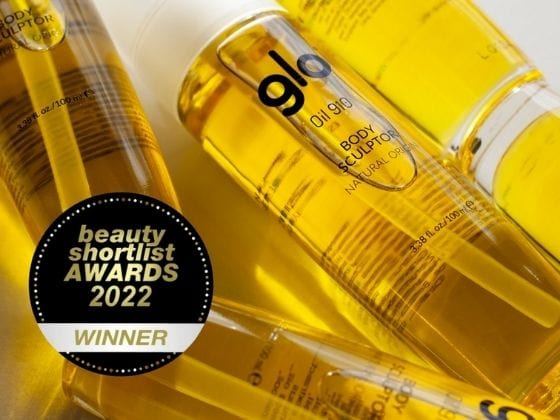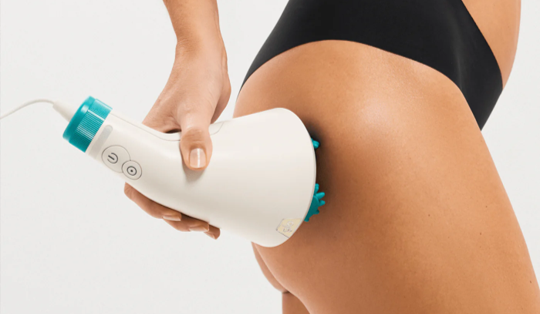What Is Rosacea?
Rosacea is a chronic but treatable skin condition that primarily affects the central part of the face and is often characterized by flare-ups and remissions.
Although rosacea can develop in many forms and at any age, it typically begins after the age of 30 as a redness or flushing on the cheeks, nose, chin, or forehead that may come and go.
Studies have shown that, over time, the redness tends to become more intense and persistent, and visible blood vessels may appear. If left untreated, inflammatory bumps and pimples often develop, and in severe cases—especially in men—the nose can become swollen and bulbous due to excess tissue. Up to 50% of cases also involve eye symptoms.
While rosacea can affect all skin types and demographics, fair-skinned individuals who tend to blush or flush easily are believed to be at higher risk. The condition is diagnosed more often in women, but it tends to be more severe in men. There is also evidence that rosacea may be hereditary.
Rosacea is not contagious, and like acne, it can be very distressing for those who suffer from it. According to surveys by the National Rosacea Society (NRS):
-
Nearly 90% of rosacea patients reported that the condition had lowered their self-confidence and self-esteem.
-
41% said it had caused them to avoid public contact or cancel social engagements.
-
Among those with severe rosacea, almost 88% stated that the disorder had negatively affected their professional interactions, and nearly 51% said they had even missed work because of it.
-
The good news is that over 70% said that medical treatment had improved their emotional and social well-being.
External factors such as sun exposure, wind, extreme temperatures, and certain makeup or cosmetics can trigger flare-ups. Other common triggers include spicy or hot foods and drinks, alcohol, and emotional stress.
Although there is no cure, rosacea can be managed and controlled. To effectively address rosacea symptoms, it’s essential to first identify which subtype of rosacea you have.
In this article, we’ll explain how LED phototherapy can help manage rosacea, improve skin health, and provide a unique self-care experience.
What Are the Most Common Symptoms of Rosacea?
The most common symptoms of rosacea include persistent redness, burning or itching sensations, visible small blood vessels, and in some cases, acne-like flare-ups with pustules:
-
Facial redness. Rosacea can cause the face to flush more easily. Over time, this redness may become permanent. Depending on skin tone, the redness may appear less intense, or have a pinkish or violet hue.
-
Visible veins. Small blood vessels on the nose and cheeks may break and dilate (known as spider veins). They can be subtle or almost invisible depending on the skin color.
-
Swollen bumps. Many people with rosacea develop acne-like bumps on their face, which sometimes contain pus.
-
Burning sensation. The affected skin may feel hot, tender, and sensitive.
-
Eye problems. Many people with rosacea also experience dry, irritated, or swollen eyes and eyelids — a condition known as ocular rosacea. Eye symptoms may appear before, during, or after skin symptoms.
-
Nose enlargement. Over time, rosacea can thicken the skin on the nose, making it appear larger — a condition known as rhinophyma, which is more common in men than in women.

There are several subtypes of rosacea, which can often be visually distinguished. The four most common forms are:
-
ETR Rosacea (Erythematotelangiectatic): Characterized by persistent facial redness and visible spider veins.
-
Papulopustular Rosacea: Appears as small, red bumps filled with pus, often concentrated in the central part of the face.
-
Phymatous Rosacea: Causes thickening and enlargement of the skin, most commonly affecting the nose.
-
Ocular Rosacea: Involves eye irritation, burning sensations, and redness of the eyelids. It may appear as crusting along the lash line, a gritty feeling, or frequent styes around the eyelid margins. Eye symptoms can appear before, during, or after skin symptoms.
 Some real-life image examples that can help us understand these rosacea subtypes and how they manifest on the skin:
Some real-life image examples that can help us understand these rosacea subtypes and how they manifest on the skin:
ROSACEA PHASES

What Causes Rosacea?
As mentioned at the beginning of this article, the exact cause of rosacea remains unknown. While several elements can trigger flare-ups, recent studies suggest that facial redness may be the beginning of an ongoing inflammatory process triggered by a combination of neurovascular dysregulation and innate immune system imbalance.
Beyond these neurovascular and immune factors, research has also identified the presence of a microscopic mite called Demodex folliculorum as a possible contributor to rosacea. This mite is a normal inhabitant of human skin, but it has been found to be significantly more abundant on the facial skin of individuals with rosacea.

-
The LED Phototherapy Revolution
LED phototherapy is a non-invasive technique that uses specific wavelengths of light to treat various skin conditions, including rosacea. Its main benefits include:
-
Reduced inflammation: LED light penetrates the deeper layers of the skin, helping to decrease inflammation and soothe redness.
-
Stimulated cell regeneration: It promotes tissue repair while improving skin texture and tone.
-
Enhanced circulation: It boosts blood flow, supporting better oxygenation and cellular nourishment.
These features make LED phototherapy a safe and effective option for those seeking complementary alternatives to traditional rosacea treatments.
How Glo Mask Helps Combat Rosacea
It has been proven that LED phototherapy (light-emitting diode) reduces inflammation — essential for soothing all rosacea subtypes — and activates the skin’s natural “wound-healing cells.” Once a staple in dermatology clinics, this trusted technology is now available for at-home use.
Our Glo Mask LED facial device has been shown in clinical studies to effectively reduce facial redness, improving the appearance of ETR rosacea (facial redness subtype).
The red (633 nm) and near-infrared (830 nm and 1070 nm) wavelengths directly target inflammation, delivering what feels like a soothing 10-minute light bath experience.
Using Glo Mask regularly can make a significant difference in managing rosacea:
-
Redness Reduction: LED light helps calm the skin and reduce redness, promoting a more even complexion.
-
Flare-Up Control: By reducing inflammation and stimulating cellular repair, Glo Mask can help minimize the frequency and severity of flare-ups.
-
Improved Skin Texture: With consistent use, the skin feels smoother, more nourished, and with fewer imperfections — strengthening the skin barrier over time.
How to Integrate LED Phototherapy into Your Skincare Routine
To achieve the best results with Glo Mask, we recommend following these tips:
-
Consult a Specialist: Before starting any treatment, it’s important to seek the advice of a dermatologist—especially if you have a history of skin conditions.
-
Regular Sessions: Consistency is key. Establish a treatment schedule that fits seamlessly into your daily routine.
-
Complement with a Gentle Skincare Routine: Use mild, soothing products designed for sensitive or rosacea-prone skin, avoiding ingredients that may cause irritation.
-
Sun Protection: LED phototherapy is a complementary treatment, not a substitute for sunscreen. Always protect your skin from direct sun exposure.
Conclusion
The LED phototherapy technology delivered through Glo Mask represents a revolutionary innovation in rosacea care. With its ergonomic design and customizable treatment modes, Glo Mask by Glo not only enhances the skin’s appearance but also works deep within to reduce inflammation and restore skin health.
If you’re looking for an effective, advanced solution to manage rosacea, discover more about Glo Mask and how LED phototherapy can transform your skincare routine—offering a simple yet deeply comprehensive approach to radiant, balanced skin.

















